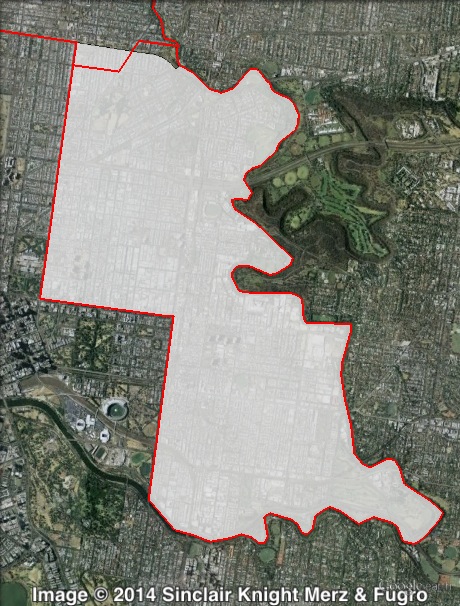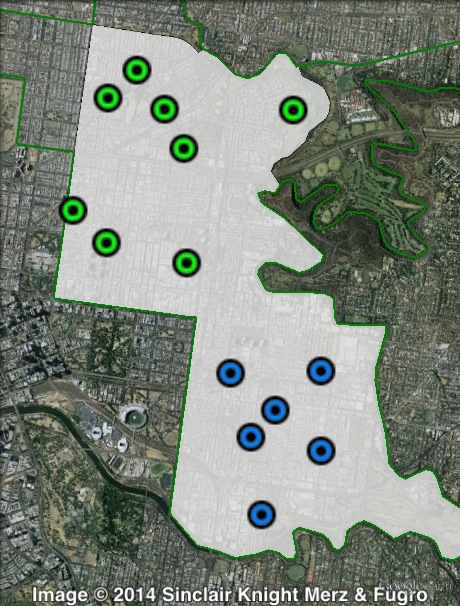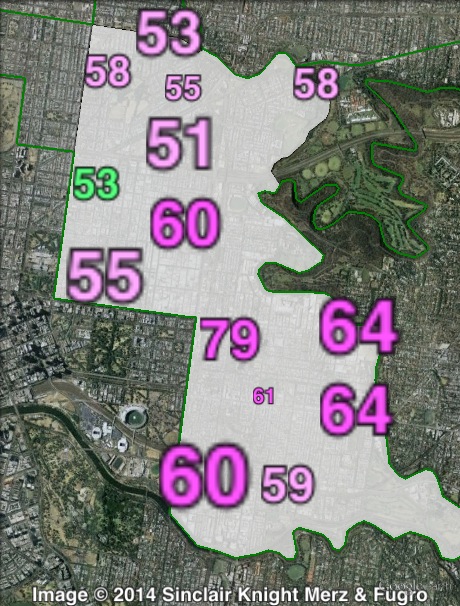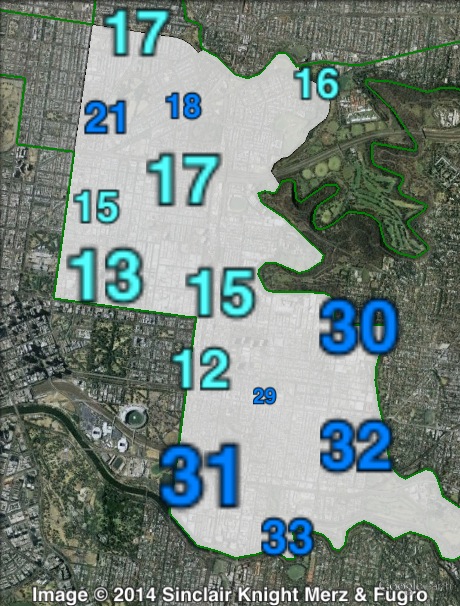ALP 6.4% vs GRN
Incumbent MP
Richard Wynne, since 1999.
Geography
Inner Melbourne. Richmond covers most of the City of Yarra, covering the suburbs of Abbotsford, Burnley, Clifton Hill, Collingwood, Fitzroy, Richmond and parts of Fitzroy North.

Redistribution
Richmond’s boundaries changed very slightly, with the northern border with Brunswick slightly realigned.
History
Richmond was first created as a two-member district in the first Victorian Legislative Assembly in 1856. Both seats were held by unaligned members until 1889, when one of the two seats was won by the ALP.
In 1904, Richmond became a single-member district. It was first won by unaligned member George Bennett, who had been one of the two members for Richmond since 1889.
In 1908, the ALP’s Edmond Cotter won Richmond. He held it continuously from 1908 until 1945. In 1945, Richmond was won by Stan Keon, who left in 1949 to take the federal electorate of Yarra. He went on to be expelled from the Labor Party in 1955 and helped found the Democratic Labor Party.
In 1949, Richmond was won by Frank Scully, also of the ALP. He served as an assistant minister in the Cain government until 1955, when he left the ALP as part of the split that saw the creation of the Democratic Labor Party. He won re-election in Richmond in 1955 and became leader of the DLP in the Victorian Parliament from 1955 to 1958, when he lost the seat to the ALP’s Bill Towers. The ALP has held the seat ever since.
Towers held the seat until 1962, when he was succeeded by Clyde Holding. Holding became leader of the Victorian ALP from 1967, losing the 1970, 1973 and 1976 elections. In 1977 he moved to the federal seat of Melbourne Ports, and served as a minister in the Hawke government, and retired in 1998.
Richmond was held from 1977 to 1988 by Theo Sidiropoulos, and was won in 1988 by Demetri Dollis. In 1999, Dollis was disendorsed by Labor leader Steve Bracks, and was replaced by former Lord Mayor of Melbourne, Richard Wynne.
Wynne served in a variety of frontbench roles in the Bracks and Brumby governments.
Wynne faced serious challenges for his seat in 2002, 2006 and 2010 by the Greens. In 2010, Wynne’s primary vote dropped by 9%, and would have likely lost the seat to the Greens barring a decision by the Liberal Party to preference Labor over the Greens. Thanks to this decision, Labor’s two-candidate-preferred vote increased by 1.6%.
Candidates
- Nevena Spirovska (Sex Party)
- Stephen Jolly (Independent)
- Miranda Smith (Animal Justice)
- Tom Keel (Independent)
- Weiran Lu (Liberal)
- Kathleen Maltzahn (Greens)
- Richard Wynne (Labor)
- Sarah Knight (Family First)
Assessment
Richmond is a marginal seat. If the Liberal Party were to make the decision to preference the Greens over Labor, the Greens would be in a very strong position to win, but that is unlikely to happen. Assuming no change Liberal Party preferencing policy, the Greens will need a significant swing to win the seat.
2010 election result
| Candidate | Party | Votes | % | Swing | Redist |
| Richard Wynne | Labor | 13,328 | 37.26 | -9.15 | 37.22 |
| Kathleen Maltzahn | Greens | 10,174 | 28.44 | +3.76 | 28.27 |
| Tom McFeely | Liberal | 8,154 | 22.79 | +2.91 | 22.71 |
| Stephen Jolly | Independent | 3,097 | 8.66 | +3.02 | 8.20 |
| Angela White | Sex Party | 1,020 | 2.85 | +2.85 | 2.85 |
| Socialist Alliance | 0.03 | ||||
| Other independents | 0.73 |
2010 two-party-preferred result
| Candidate | Party | Votes | % | Swing | Redist |
| Richard Wynne | Labor | 20,114 | 56.24 | +2.6 | 56.40 |
| Kathleen Maltzahn | Greens | 15,652 | 43.76 | -2.60 | 43.60 |

Booth breakdown
Booths in Richmond have been divided into north and south. The south covers the suburb of Richmond, while the north covers other suburbs including Collingwood and Fitzroy.
The ALP won the two-candidate-preferred vote over the Greens in both areas: 54.7% in the north and 64.7% in the south.
The Liberal Party came third, with 16.2% in the north and 28% in the south.
| Voter group | LIB % | ALP 2CP % | Total | % of votes |
| North | 16.18 | 54.72 | 13,955 | 37.10 |
| South | 27.99 | 64.72 | 11,002 | 29.25 |
| Other votes | 25.31 | 51.22 | 12,658 | 33.65 |




Stephen Jolly (Yarra councillor) did quite well in the north, too – 12.68%, not far behind the Libs. Best booth was 16% at Atherton Gardens, ahead of the Libs.
Jolly is in the media a lot for a councillor. He was in the Herald Sun a bit for his part in the East West Link protests (portrayed as a villain, of course), which will no him no harm in this seat.
Greens-commissioned polling had them ahead in this seat.
Maltzhan is a pretty controversial candidate – she is most well known as an outspoken campaigner to criminalise the sex industry (the ‘Nordic model’ it is called, where the buying of sex is criminalised, not the selling, but it of course shuts down brothels and leads to more dangerous liaisons).
It’s not the type of issue that is easy to place on the left-right spectrum, but I would be surprised if this view is shared by many residents of Richmond.
It is fair to say that the Sex Party will not be preferencing Maltzhan in this seat.
With respect to Kathleen, I think a less controversial (read: better) Greens candidate would have stood a better shot here.
I too have no idea why the Greens keep painting targets on themselves by preselecting Maltzahn. I think of the spectrum as like facing a circle with the centre at the nearest point; people who go far enough to the left go round the back and come out on the right, and vice versa.
I find that seatpoll pretty unconvincing (http://kevinbonham.blogspot.com.au/2014/11/victorian-poll-roundup-and-seat-betting.html), especially because of the suggestion that undecided voters would vote for the Greens, as well as all the other reasons why Greens polls showing them narrowly winning seats should generally not be trusted.